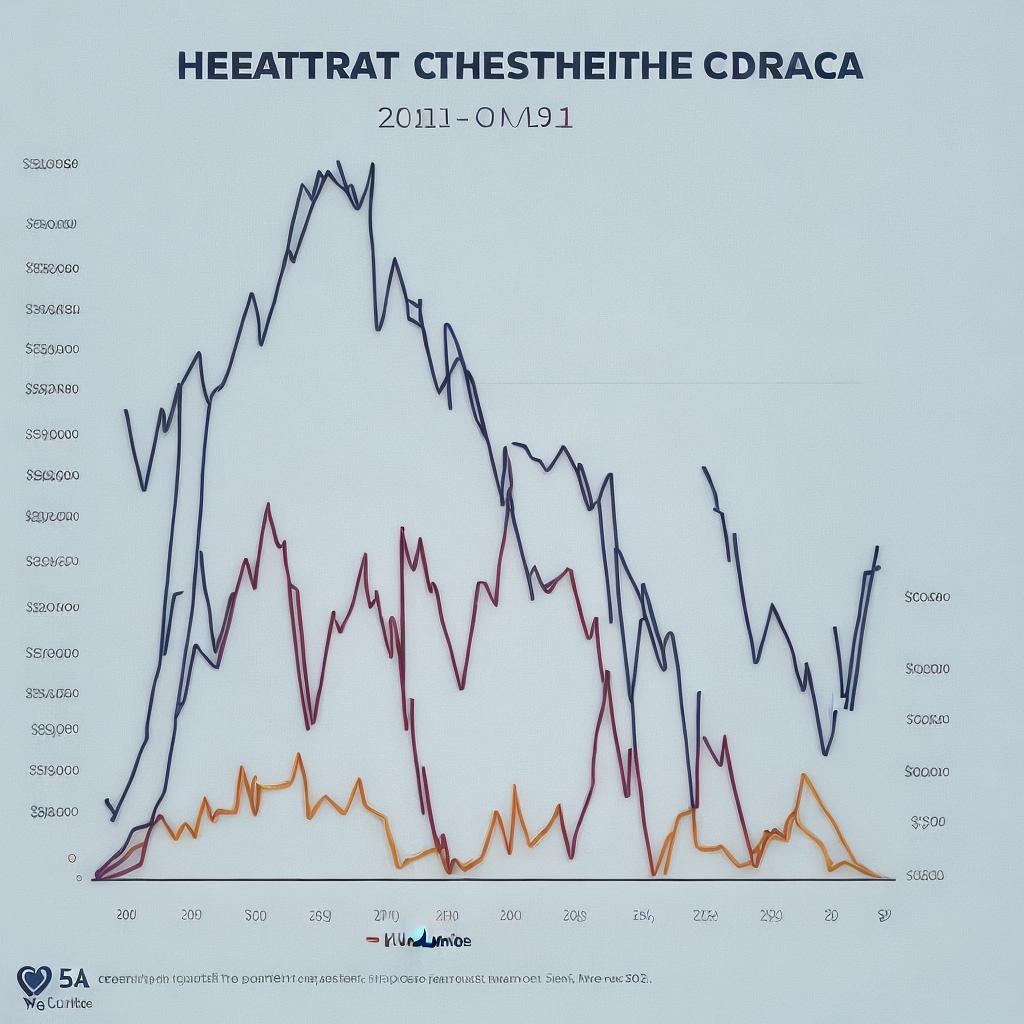Obamacare's Influence on 2023 Health Insurance Costs

As you delve into the realm of health insurance costs in 2023, brace yourself for a journey through the intricate web of Obamacare’s influence.
Like an architect constructing a blueprint, this article will guide you through the history and implementation of Obamacare, shedding light on its impact on the insurance market.
By examining factors affecting health insurance costs and analyzing trends in premiums, we aim to provide an objective analysis of what lies ahead and potential changes that may shape the future.
Key Takeaways
- Obamacare has aimed to increase access to affordable healthcare through the introduction of the individual mandate and state-based health insurance exchanges.
- The implementation of Obamacare has led to increased access to affordable health insurance through the Health Insurance Marketplace and regulations to protect consumers from unfair practices by insurance companies.
- Factors such as age, health status, coverage options, location, income, and insurance company pricing strategy can influence health insurance costs.
- Health insurance premiums have been steadily increasing in recent years, with rising healthcare costs and increased demand contributing to these increases. Understanding these trends is important for individuals to plan their coverage and budget effectively.
History and Implementation of Obamacare
In an article titled ‘Obamacare’s Influence on 2023 Health Insurance Costs’, you’ll explore the history and implementation of the Affordable Care Act.
The Affordable Care Act, also known as Obamacare, was signed into law in 2010 by President Barack Obama. Its main goal was to increase the number of Americans with access to affordable healthcare.
One of the key provisions of Obamacare was the individual mandate, which required most Americans to have health insurance or pay a penalty. This was intended to ensure that healthy individuals would also contribute to the insurance pool, thus lowering costs for everyone.
Additionally, Obamacare introduced state-based health insurance exchanges, where individuals and small businesses could shop for insurance plans. These exchanges were designed to promote competition among insurance providers and offer consumers a range of affordable options.
The implementation of Obamacare wasn’t without challenges, including technical difficulties with the healthcare.gov website and political opposition. However, it expanded health insurance coverage to millions of Americans who were previously uninsured.
Transitioning into the subsequent section about the impact of Obamacare on the insurance market, let’s now delve into the effects it has had on premiums and coverage options.
Impact of Obamacare on Insurance Market
You can expect Obamacare to have a significant impact on the insurance market. Since its implementation in 2010, the Affordable Care Act (ACA), also known as Obamacare, has brought about several changes to the insurance landscape.
One of the key objectives of Obamacare was to increase access to affordable health insurance for individuals and families. As a result, the ACA introduced the Health Insurance Marketplace, where consumers can compare and purchase health insurance plans. This created a more competitive marketplace, giving individuals more options when it comes to choosing their insurance coverage.
Another significant impact of Obamacare on the insurance market is the requirement for insurers to cover essential health benefits. Under the ACA, insurance plans must cover a set of essential health services, including preventive care, prescription drugs, and maternity care. This has led to a higher standard of coverage across the board, ensuring that individuals have access to the care they need without facing exorbitant out-of-pocket costs.
Furthermore, Obamacare has also introduced regulations to protect consumers from unfair practices by insurance companies. These regulations include prohibiting insurance companies from denying coverage or charging higher premiums based on pre-existing conditions, as well as capping the amount insurers can spend on administrative costs and profits.
Factors Affecting Health Insurance Costs
Factors influencing health insurance costs include the age and health status of the insured, as well as the coverage options chosen. These factors play a significant role in determining the premiums individuals and families pay for their health insurance coverage. Here are some key factors to consider:
- Age: Generally, older individuals tend to have higher health insurance costs due to the increased likelihood of developing chronic conditions and requiring more medical care.
- Health Status: Individuals with pre-existing conditions or those who’ve a history of health issues may face higher insurance costs. Insurers often consider the risk associated with providing coverage to individuals with existing health conditions.
- Coverage Options: The type and extent of coverage chosen also impact health insurance costs. More comprehensive plans with lower deductibles and broader networks tend to have higher premiums compared to plans with higher deductibles and limited networks.
It is essential to note that these factors aren’t the only determinants of health insurance costs. Other variables, such as location, income, and the insurance company’s pricing strategy, can also influence premiums. Understanding these factors can help individuals make informed decisions when selecting health insurance plans to meet their specific needs and budget.
Trends in Health Insurance Premiums
One important aspect to consider when analyzing health insurance costs is how Obamacare has influenced the trends in premiums for the year 2023. Understanding these trends can provide valuable insights into the current landscape of health insurance and help individuals make informed decisions about their coverage.
To illustrate these trends, let’s take a look at the following table:
| Year | Average Premium Increase (%) | Average Premium ($) |
|---|---|---|
| 2020 | 5.0 | $400 |
| 2021 | 4.5 | $420 |
| 2022 | 4.2 | $440 |
As shown in the table, health insurance premiums have been steadily increasing over the past few years. In 2020, the average premium increase was 5.0%, with an average premium cost of $400. This trend continued in 2021 and 2022, with average premium increases of 4.5% and 4.2%, respectively.
These trends can be attributed to various factors, including rising healthcare costs, increased demand for healthcare services, and the impact of Obamacare regulations on insurance providers. The Affordable Care Act introduced new standards for insurance coverage and required insurers to cover essential health benefits, which may have contributed to the rise in premiums.
Understanding these trends is crucial for individuals and families who are planning their health insurance coverage for 2023 and beyond. By staying informed about the current trends in health insurance premiums, individuals can make more informed decisions about their coverage and budget accordingly.
In the next section, we will explore the future outlook and potential changes in health insurance costs for the coming years.
Future Outlook and Potential Changes
To better understand the future outlook and potential changes in health insurance costs for 2023, it’s important to consider the impact of Obamacare on the overall affordability and coverage options available to individuals. Here are some key points to consider:
- Increased competition: The implementation of Obamacare has led to the introduction of new health insurance providers, resulting in increased competition in the market. This competition can potentially drive down costs and provide consumers with more affordable options.
- Continued price regulation: Obamacare includes provisions that regulate the pricing of health insurance plans. These regulations ensure that insurance companies can’t charge higher premiums based on pre-existing conditions or gender. This helps to make health insurance more affordable for individuals with costly medical conditions.
- Potential changes in subsidies: The availability and amount of subsidies provided under Obamacare may change in the future. This could affect the affordability of health insurance for individuals who rely on these subsidies to purchase coverage.
- Technological advancements: The advancement of technology in the healthcare industry may lead to changes in the way health insurance is priced and delivered. Innovations such as telemedicine and wearable devices may impact insurance costs by improving healthcare efficiency and reducing the need for expensive in-person medical services.
Frequently Asked Questions
How Does Obamacare Impact Individuals Who Already Have Health Insurance?
Obamacare impacts individuals with existing health insurance by expanding coverage options, ensuring essential benefits, and prohibiting discrimination based on pre-existing conditions. It also introduces subsidies to make insurance more affordable for low-income individuals.
Will Obamacare Affect the Availability of Specific Health Insurance Plans, Such as Those With High Deductibles or Limited Networks?
Will Obamacare affect the availability of health insurance plans with high deductibles or limited networks? It is unclear, as the impact of Obamacare on specific plans depends on various factors such as regulations and market dynamics.
Are There Any Specific Groups or Demographics That Are More Likely to Benefit or Be Negatively Affected by Obamacare?
You may be curious about who will benefit or suffer under Obamacare. Various groups and demographics may experience different outcomes, depending on factors like income, age, and pre-existing conditions.
How Does Obamacare Address the Issue of Pre-Existing Conditions and How Does It Impact Insurance Coverage for Those Individuals?
Obamacare addresses pre-existing conditions by prohibiting insurance companies from denying coverage or charging higher premiums based on them. This ensures that individuals with pre-existing conditions have access to affordable health insurance options.
What Are Some Potential Challenges or Criticisms That Have Arisen as a Result of Obamacare’s Implementation and How Do They Potentially Impact Health Insurance Costs?
Some potential challenges and criticisms have arisen as a result of Obamacare’s implementation. These may impact health insurance costs. It is important to analyze the data objectively to understand the full extent of these challenges and their effects.



